
You are logged in as
Logout
You are logged in as
Logout
"I feel privileged to have been a part of this last 17-year chapter and hope every student at StAC will one day feel the same sense of collective belonging and pride as I do."
Dear Parents and Caregivers
Kia ora koutou katoa
Friday night was the Old Collegian’s Annual Dinner, an open invitation to any Old Collegian who would like to reconnect with others from different year groups and celebrate their association with St Andrew’s College.
This year attracted a record number of 160 for a formal seated dinner, Address to A Haggis, Toast to the College, and the presentation of three very special awards. Some Old Collegians had gathered a table, or two, together with friends, and others came along to make some new ones.
At 92, Keith Wardell (OC 1949) was the oldest in attendance and a group of boarders (Leavers of 2016 and 2017) were the youngest. Each year our Old Collegian events are hosted by the OCA Executive who plan and execute around nine events a year. Most of these weekend events are held at the College with a cocktail evening on a Friday and a Saturday seated dinner. There are also around three regional events held each year. Our Alumni and Community Relations Co-ordinator, Lisa Clark, works tirelessly to keep in touch with our Old Collegians and encourages them to attend these events.
For me the Old Collegian events are a time to recognise the diversity of our network and the many varied and interesting experiences and achievements of our alumni. At this year’s dinner, we were delighted to honour three Old Collegians and celebrate their contributions to sport, culture, and community.
Service to Sport – Britney-Lee Nicholson (OC 2017)
Britney-Lee was the recipient of the L.G. Maginness Memorial Cup for Sports Personality of the Year. Britney-Lee has excelled regionally, nationally, and internationally in both football and futsal. Britney-Lee is part of the New Zealand futsal team and continues her connection to the College as a coach. She also volunteers at Mainland Football and has recently joined the Māori Football Aotearoa New Zealand Board, contributing to the community and shaping the future of football in New Zealand
Service to Culture – Dr Jonathan Ogilvie (OC 1979)
Dr Jonathan Ogilvie was awarded the Cockram Cultural Award for his work in film. He also reminisced about his time at the College and the friendships that were formed. His latest movie, Head South, was selected to open the International Film Festival in Rotterdam and headlined the New Zealand Film Festival in Christchurch last week. Several fellow Old Collegians who worked on this film joined us to celebrate Jonathan’s success.
Service to Community – Professor Roy Kerr (OC 1950)
Prof. Roy Kerr, a distinguished nonagenarian, received The Alister Newton Award for Outstanding Service. He entertained us with a humorous speech about his time at the College post-war, which culminated with his award as Dux of the College in 1950. Roy’s mathematical ability may have been a little challenging for the Mathematics and Science teachers of the time! His exceptional intellect later earned him the Albert Einstein Medal for his 1963 discovery of a solution to Einstein’s gravitational field equations, which was a testament to his brilliance.
Each recipient was honoured with their citation and OCA trophy, and they then delivered a most interesting and enlightening reflection on their time at the College and their careers beyond. It was a special night indeed.
I am very honoured to have held the position of Patron of the OCA for the last 17 years and over this time have come to understand and value the privilege of being a StAC Old Collegian. Many over the years have given back and supported our College to enable the breadth of opportunities available to our students today. Each has been here for but a few years, and their experiences have been determined by the context of their time at St Andrew’s. However, somehow their collective experiences make up the various chapters of our 107-year history which in turn has its own story: The story of St Andrew’s College. This story is of course forever evolving with the next chapter yet to be written.
I feel privileged to have been a part of this last 17-year chapter and hope every student at StAC will one day feel the same sense of collective belonging and pride as I do.
“So shall the years gather fame to St Andrew’s, and we shall praise her while ages shall flow.”
Ngā mihi nui
Christine Leighton
Rector
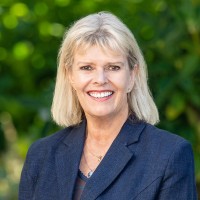
The warmer weather has finally arrived, the earlier sunrises and the first bulbs breaking into flower indicate that spring is on its way. It has been an incredible and successful term so far with special assemblies, Festival of the Spoken Word, sport competitions, musical performances, StAC Attack and educational trips, camps, and of course learning.
A huge thank you to our Year 13 boarders, especially our Heads of Boarding, Gretal Tavendale and Alexander Kinney, who put on such a great show for the school. The Boarders’ Assembly was just what we all needed after receiving the very sad news that Connor Higgs (OC 2023) had tragically died. The assembly was a celebration of life as a boarder both here at school and at home. Our day students so enjoyed the videos, competitions, and the messages given by Archibald Thomas and Holly Maraki (both Year 13).
Going on camp at Castle Hill with either a Year 9 or 10 class is always a highlight for me. This term I joined 10H for their first night in the lodge. We are so fortunate to have a great team of Outdoor Instructors led by Castle Hill Outdoor Education Centre Operations Manager Jo Parsons, providing the students an outdoor education experience which teaches, and supports the students with important life skills. For many this is the first time they have had to sleep outside in the snow, ski, or having to prepare food for a large group.
Our sports teams have enjoyed significant success this winter with many of our teams having earned the right to take part in semis and finals of their respective competitions.
Some notable achievements are the Senior A netball team narrowly losing their final against St Margaret’s College. The 1st XI Girls’ football team also won their semi-final against Rangiora, the final is a repeat of last year’s final against Avonside Girls’ High School. The Girls’ A basketball team have qualified for the Wheelan Trophy Division 1 final and will be playing Kaiapoi High School next Tuesday. The Boys’ A basketball team lost their semi-final against Christ’s College in the Thomson Trophy Division 1 and the 1st XI Girls’ hockey team also lost their semi-final against St Margaret’s College.
To say the students are excited about Tournament Week would be an understatement. There is quiet optimism about how the teams will perform based on how well our teams have performed this season in the local competitions. It is my good fortune that I am able to support the 1st XV rugby and Girls’ 1st XI hockey teams in Hamilton, the Boys’ and Girls’ A basketball in Dunedin, and the Senior A netball and junior rugby teams here in Christchurch.
The Heads of Department have informed me that the changes to NCEA Level 1 are going well. Thanks to the hard work and professionalism of the staff, the significant changes have gone very well despite the lack of clear direction and resourcing from the Ministry and NZQA. We are most fortunate that all subjects have developed strong professional relationships with other schools and their respective subject associations. This has allowed the sharing of ideas and resources to better prepare the students.
Thank you to all of you who supported the Tutor Conferences at the beginning of the term and the Year 9 and 10 Parent-Teacher Interviews held earlier this week, it is a real point of difference that we can have regular meetings between the tutor or teacher and the family. As always, I have had a lot of very positive feedback about them, especially with respect to the option of being able to have the interviews online or in person. Just a reminder that the in-person Year 9 and 10 interviews will take place next Wednesday. All information related to this event has been sent to you via email.
Can I please ask you to encourage your child to prepare as best they can for the Prelim examinations. The marks your child achieves will be the ones awarded if they are unable to sit the end-of-year NCEA examinations.
After the Prelim examinations, we will once again have the Parent-Student-Tutor Conference on the last Thursday and Friday of the term. The focus of this conference will be what went well in the Prelim examinations and what the next steps need to be to ensure your child’s potential is achieved in the external NCEA examinations. Straight after the Prelim examinations, teachers will provide feedback to every student which they will record in an online portal. The information recorded in the portal will be used in the conference as a starting point for discussion. In Term 4, the tutor will sit down with every student to check how the plan is progressing and what might need to be modified. We are hoping this immediate and specific feedback will better help students prepare for their NCEA examinations.
We continue to have a real focus on how students are wearing their uniform and on their personal grooming. Can I please ask you to check that your child is correctly equipped as we transition into spring.
Evert van Florenstein
Head of Secondary School
Deputy for Rector
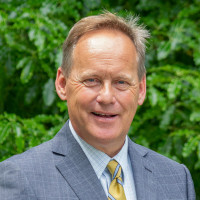
AUGUST
23 Cultural Assembly, Gym 1
28 Winter Sports and Leadership Photo Day
28 Secondary School finishes at 1.00pm for Parent-Teacher interviews
30 Years 9–10 Dance
SEPTEMBER
2–6 Winter Tournament Week
13–14 Dance Revue
26 StAC Ag Show
26 Parent-Student-Parent Tutor Conferences for NCEA day students (in person)
27 Term 3 ends
Please view the fixtures on the College intranet for more upcoming events. The intranet is updated daily.
Visit the College intranet, StACNet >
The St Andrew’s story is a story of faith, resilience, hope, and courage. In times of challenge, we can remind ourselves of our story, where we have come from and what has enabled us to come out the other side of difficult circumstances.
A couple of weeks ago the Chaplaincy team had the privilege of attending the New Zealand Church Schools’ RE Teachers and Chaplaincy Conference in Long Bay Beach, Albany. This was an incredible setting to hear numerous voices remind us of our Aotearoa’s story of faith, resilience, hope, and courage and what this can look like moving forward. We certainly have big challenges lying ahead of us. Increasing climate change, financial and geopolitical instability, and deepening division within our own political systems. Hope, faith, resilience, and courage could not be more vital than right now.
Mrs Leighton, Mr Hughes, and I were fortunate to attend the Presbyterian Church Schools’ Principals and Chaplains Conference, also in Auckland. The theme of ‘our story’ continued. It was amazing to be reminded of our Presbyterian story in Aotearoa, New Zealand and the stories of numerous Presbyterian Schools’ journeys since they began. Faith, hope, resilience, and courage were at the heart of many of these school’s foundations.
Over my 15 years in chaplaincy at St Andrew’s College we seem to have had more challenges than seems fair. Just last week our school has been rocked by the sudden death of another brilliant young man. Connor Higgs was a Leaver of 2023 and died on Wednesday 14 August. Our community is devastated and asking so many questions. Our hearts, our love, and prayers go out to the Higgs family and extended whanau. We grieve with them.
Some of our staff have commented as to how resilient can one be! Our community is hurting.
It is times of great challenge that our foundations are tested. Time and time again I have witnessed the power of our story, a story of great hope, a story of faith, a story that makes us steadfast and gives us the courage to carry on. These foundations have strengthened in the face of adversity and will continue to hold us secure in the future.
It has been encouraging to see so many Leavers of 2023 come back to the St Andrew’s College Centennial Chapel and pay their respects and light a candle in memory of Connor. I love our community and we will stand stronger, together, tomorrow!
May those who mourn find consolation in the words of the following benediction.
May the peace of God, who surpasses all understanding, keep your heart and mind safe in the Union of Christ Jesus. May the Grace of our Lord, the Love of God and the fellowship of the Holy Spirit be with us all as we mourn the death of Connor Higgs, now and forever more. Amen
God bless,
Rev. Paul Morrow
College Chaplain
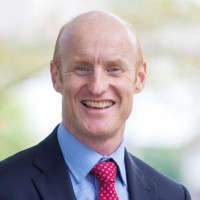
Welcome to a busy and crazy Term 3 where we have had plenty going on! From special assemblies, fundraising events, and curriculum evenings to our StACTalks parent nights, winter sport finals, and even a Junior dance, Term 3 always packs it in and keeps everyone on their toes. Overall, the Middle School have been very settled. It has been great to meet, and work with a wider number of Middle School students this term in many different capacities.
Term 3 is one of my favourite terms because we head towards springtime and really knuckle down into our learning. It is also a term where we start looking into next year and make decisions about what it will look like. Opportunities for Year 10 students to apply for leadership roles will take place soon and we will be preparing to welcome the 2025 new entrants.
I wish all students well for the important NCEA Prelim examinations coming up from Wednesday 11 September. Work hard and you will get what you deserve.
Matt Parr
Head of Middle School
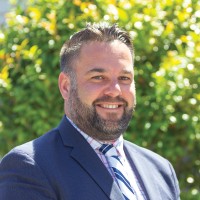
We are over halfway through the Year 10 winter camps now and they have been very successful, and our Outdoor Education team at Castle Hill are doing an amazing job. I have heard some amazing stories from these experiences, including a good amount of snow in recent weeks. I know that the classes yet to attend are very much looking forward to it too.
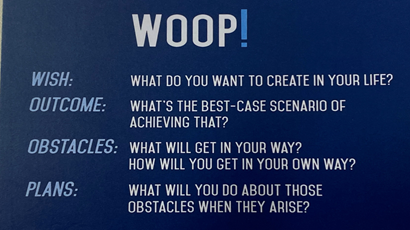
It is feedback season as all students prepare for the business end of the year. I do hope that those of you who engaged in Parent-Tutor Conferences at the beginning of this term, found them valuable. Having students go through the process of setting some WOOP goals and reflecting on their year to date is a fantastic way to encourage them to be accountable for their own education journey and well-being regardless. WOOP is an evidence-based goal setting technique based on over 20 years of research. Unlike many other goal-setting frameworks WOOP guides you through a process beyond simply thinking about a ‘WISH’ you would like to achieve.
For those with children in Year 9 and 10, we hope you found benefit in attending one of the two Parent-Teacher Interview evenings on Monday 19 (online) and Wednesday 28 August. This interview should provide a platform to follow up on any questions from our formal reporting round earlier in the year and a chance to check on progress or ask any other questions.
Kia ora koutou e te whānau
We recently hosted Bridget Ford, a Director at The Headache Clinic, at our Monday Focus meeting – a programme run on Monday mornings for Year 13 students which aims to expose them to a range of speakers who talk about their own career paths and then about the work they are currently doing. Bridget talked about her own education and career, and then provided some excellent advice to students about preventing headaches and migraines, particularly during periods of higher stress with study and exams. This was very timely, and I have listed some of her key pieces of advice below.
The starting point for Bridget’s advice is that a high proportion of headaches and migraines stem from inflammation of the brain stem, the area at the base of the skull. Key factors that influence this kind of inflammation include posture, lifestyle factors, and neck strength and mobility. Our heads weigh between 5.5 and 7.0kg, and a 1cm forward misalignment (away from being directly in line with the spine) can equate to an extra 1kg or relative weight which is borne by our shoulder muscles. Some quick tips that we were left with included:
If you or your child suffers from regular headaches or migraines, it is a good idea to have an assessment done. The Headache Clinic provides expert advice in this area.
The remainder of Term 3 is moving at a rapid pace: our Year 13s have fewer than 30 days at school left before they leave for NCEA externals! I wish you all energy and perseverance as we move through the winter and into spring together.
Ngā mihi mahana/Warm greetings to you all.
John Ruge
Head of Senior College
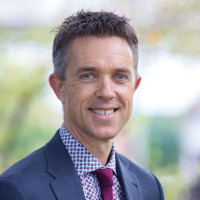
A reminder that online course selection forms for 2025 are now closed. If you have any questions or concerns about course choices for next year there are a number of staff who are available to help and advise you and your son/daughter. Please feel free to contact relevant subject teachers, Heads of Departments, deans, our Careers Counsellor, or me if you would like to discuss anything to do with the process.
NCEA Prelim examinations will run from Wednesday 11 to Friday 20 September (inclusive) for all Year 12 and 13 students. These are extremely important and students need to be well prepared. The results from these examinations form the basis for any estimated (derived) grades if students are sick or cannot attend the end-of-year externals, and they also provide a very good indicator of progress towards final exams in November.
Day students do not need to attend school between examinations, unless they have study classes or scheduled times for practical/portfolio based subjects.
On Thursday 26 and Friday 27 September we will hold Parent-Student-Tutor Conferences where students will talk about their exam results, reflect on what they have done well and what they need to improve, and present a study plan for the NCEA externals in Term 3. Head of Teaching and Learning, David Bevin, will send you more information about these conferences closer to the time.
If you have a child who is leaving school at the end of this year, there are a number of events that we host to celebrate their time at StAC and to wish them well for the future.
Year 13 parents/whānau should have received an email invitation to the Leavers’ Chapel Service, Assembly, and Dinner.
Year 12 parents/whānau will receive invitations to the Leavers’ Assembly and a special function hosted by the Rector next term.
Term 3 has resumed in a very positive manner with a full and vibrant programme of winter sport fixtures. Students continue to thrive with the opportunities presented and have many enriching experiences through participating and engaging with the co-curricular programme. In recent weeks I have enjoyed watching some very good fixtures.
Our teams will be emphasising teamwork and preparation as we approach the end of the winter sports season. For many teams there is the excitement of Tournament Week, and we wish them all well in striving for their own team and personal goals. It has been a pleasure to attend sideline, and witness so much support for College teams across all sports. For fifteen sports teams, the focus will move towards Winter Tournament Week with teams attending tournaments from Whangarei right down to Dunedin.
We wish them all well.
Mark Lane
Director of Sport and Cultural Activities
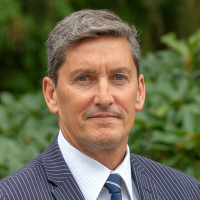
As the Olympics draw to a close, it’s a perfect time to celebrate the incredible efforts of our Kiwi athletes, especially those who have won medals. Over the past few weeks, we’ve witnessed many examples of the cornerstones of our Thistle – Respect, Responsibility, Courage, and Engagement – embodied by numerous Olympic athletes.
Dame Lisa Carrington, our most decorated Olympian, truly exemplifies the essence of sport. She believes that her success stems from her pure enjoyment of the sport, rather than striving to be the best.
The Olympics have sparked many conversations about our perception of sport and success. They offer us a chance to look beyond winning and appreciate the broader benefits that sport provides to athletes and coaches, both on and off the field.
As we reflect on the Olympics and our own sporting experiences at StAC, here are a few conversation starters to consider:
As our winter sports season comes to a close, we will be sending out a survey to parents to evaluate the effectiveness of our sports programme across all levels. Our whakataukī, ‘He Waka Eke Noa’, guides us in fostering unity in our sports environments. We welcome your feedback to help us improve.
Last summer’s sport survey provided us with valuable insights across various sports and teams. Overall, the feedback was positive, particularly in areas such as facilities, equipment, and coaching.
However, there is still room for improvement in communication and feedback. This information allows us to better support our sports and teams as we prepare for the summer season, striving to create the best experience possible for our rangatahi.
We encourage parents to complete this short survey when it is sent out in September.
Towards the end of the term most students will start to practise for summer sport in Term 4. In most cases students continue with the same sport and team as they participated in during Term 1. It is important that there are limited changes to ensure that the same teams can be entered in competition. Students must see Ms Ward in the Sports Office should they need to change their option in justifiable circumstances.
Our expectation is that all students up to Year 12 are fully involved in the co-curricular programme and it is encouraged for all Year 13 students to be involved. The key aim is to assist all students find a sport or activity that enriches their lives and puts them on the path to lifelong participation. Should you have any queries regarding your child’s involvement in co-curricular activities please don’t hesitate to contact your son/daughter’s tutor. Our Sport and Cultural Handbook is also a very good reference for programme information. This can be found in StACNet– click here.
If you have any queries regarding competitions organised by School Sport Canterbury, please do contact either Sports Co-ordinator, Leanne Ward LPO@stac.school.nz or Director of Sports, Mark Lane, at MLA@stac.school.nz. Parents are not to contact the School Sport Canterbury office directly. Most of the key information is on their website (click here).
How much is too much when it comes to youth sport? - A guide to understanding specialisation, playing multiple sports, and training load
by Hamish Rogers, Editor-in-Chief of balanceisbetter.org.nz.
Recently, lots of guidance and advice has been aimed at coaches, parents, and sport leaders and administrators about how much sport young people should do, and whether young people should participate in one sport or many. This guide has been produced to shed more light on the concepts of specialisation, early specialisation, playing multiple sports (also known as sampling), training load, overuse injury, and overtraining.
These concepts all underpin the guidance and advice provided about the amount of sport and the number of sports young people should participate in. The guide concludes with practical takeaways for how coaches, parents, sport leaders and administrators should apply this guidance and advice.
A recent conversation with a colleague drew my attention to the need to produce this guide. We were both commenting on how often we were hearing people talk about the need for young people to “play multiple sports”. While on the surface we both agreed with this statement, it was some of the behaviours surrounding some of these “play multiple sports” conversations that suggested the message was perhaps becoming oversimplified.
Before we begin to talk about training and competition load, and specialisation versus sampling other sports, it’s important to note that we want all young people in Aotearoa / New Zealand to be physically active, which could be through sport, active recreation, or play.
To outline what good levels of physical activity for young people look like, we draw from World Health Organisation and New Zealand Ministry of Health guidelines for physical activity for children aged 5 – 17, which state:
We want to encourage all New Zealanders, especially young people, to be physically active because of the extraordinary individual and collective benefits this brings.
Specifically, with regards to children and adolescents, short and long-term benefits from undertaking regular moderate to vigorous physical activity include:
Sport NZ’s Value of Sport survey found that:
In summary, it is important to recognise that being physically active is important and extremely beneficial to people’s physical, mental, social, emotional, and spiritual wellbeing.
On one hand you hear we should be doing more sport, and on the other you are hearing we might be doing too much? It’s understandable how this might be confusing. To think about this, I like to apply the Goldilocks principle. That is, people, including young people, tend to be in one of three physical activity camps:
For Sport NZ, a lot of the work we do is targeted at young people who fall into the camps of doing “too little” physical activity, as well as continuing to support people who fall into the camps of doing “just right” amount of physical activity. In the past two decades, however, we have also begun to recognise that some young people are doing “too much” physical activity.
By and large, the setting where young people do too much physical activity is through sport. The reasons underpinning this trend are numerous and complex, which I won’t go into here, but essentially these guidelines and advice on training and competition load, as well as on early specialisation, have been developed to protect the group of young people that fall or may fall into the “too much” camp.
While slightly outside of the scope of this guide, it is important to recognise that our sport system (leaders, administrators, coaches, parents, etc.) generally focus more time, effort and resource into the young people who are doing too much sport or are perceived to be talented.
While not intended, this bias of focus, energy, and effort is detrimental to young people who are late developers or born later in the year (or later in the chronological grouping a competition organises young people into). Additionally, there is an opportunity cost here, where a focus on supporting the so-called more ‘talented’ also means that resources, time, and energy are not being put into meeting the needs and motivations of the young people who are doing “too little”.
With regards to guidelines and understanding definitions, we draw from the Australasian College of Sport and Exercise Physicians (ACSEP) Position Statement on Sport Specialisation in Young Athletes.
In short, there are two things to consider here:
Not surprisingly, these things interrelate – we will talk more about that later. But it’s easiest to understand them individually first.
Sport specialisation is defined as the intensive, year-round training in a single sport at the exclusion of other sports.
The extent of a young athlete’s (18 years and under) specialisation can be initially gauged by asking three questions:
Answering yes to two of the questions indicates that the athlete has begun to specialise.
‘Early’ specialisation is defined as sport specialisation occurring before the age of 12. It is important to understand, however, that just because a young person has reached age 12, does not necessarily mean it is now appropriate for them to specialise in a sport.
The appropriate time for each young person to specialise is context specific, and will depend on a number of things, including:
We believe that for most sports the appropriate age to specialise will be much later than 12. In addition, we believe intense training in one sport at the exclusion of others should be delayed until middle to late adolescence (i.e., 15 years plus).
For the past seven years, High Performance Sport New Zealand (HPSNZ) have been tracking the age at which athletes who enter into the High-Performance Athlete Development system specialised in their respective sport. They have found that on average these athletes specialise in their respective sport at age 15 years and 5 months.
While a few successful athletes’ development journey has followed an early specialisation pathway, many have not. People will look at athletes who have specialised early and hold this up as THE model for athlete development. We need to be mindful that they are doing so retrospectively, and that they are not acknowledging the athletes who may have followed a similar pathway but did not become elite.
Additionally, research shows that that specialising early in a sport:
And with a few exceptions, specialising early in a sport may have short term benefits for performance at junior level, but does not correlate with increased performance at elite-level (i.e., it may help get you the best 12-year-old but not the best 22-year-old).
Lastly, early specialisation comes with an opportunity cost – young people who specialise early miss out on the benefits associated with participating in multiple sports.
Participation in a variety of sports has been shown to support the following benefits:
Recent research by HPSNZ found that athletes in its pre-high-performance network (athletes predicted to be 8-to-12 years from reaching a pinnacle event, e.g., Olympics or World Cup), on average, reported:
As discussed earlier, there are benefits to being involved in multiple sports. Conversely, early specialisation may expose young people to increased risks.
The basis for this thinking is ultimately about the variety of experiences versus the uniformity of experiences.
A greater variety of experiences promotes a wider range of benefits in terms of young people’s biological, psychological and social development. In turn, this supports both sport-specific development and youth development more broadly.
So, when adults think about how they can support young people to play multiple sports, they should be considering the right mix of sports to expose a young person to:
Playing multiple sports that are similar (such as Football and Futsal; Netball and Basketball, Rugby and Rugby Sevens) may provide some variety but perhaps not all of the benefits outlined above.
In particular, playing very similar sports may mean that young people are doing similar movement patterns, which may increase rather than decrease the risks of overuse injury.
The term ‘load’ reflects two aspects of physical activity:
Generally, guidelines developed around training load mostly refer to volume. This is because volume can be measured using units of time.
The Australasian College of Sport and Exercise Physicians provide the following guidelines around training volume:
With regards to measuring training intensity, there are many methods, both objective and subjective, to measure intensity. Examples include:
Significantly, because collecting and analysing data about intensity often requires expertise, resources, and time; and because there are a number of different methods to analyse intensity. There is no one universally accepted guidance around training and competition intensity, other than to say intensity increases should be phased gradually and extreme spikes in intensity should be avoided (coaches who do not manage this well may see more injured players).
Overuse injuries are the results of repetitive stress to the musculoskeletal system without enough time for recovery.
Signs of overuse injury include:
Overtraining syndrome is simply doing more training and competition than the body can recover from before the next training load is experienced.
Overtraining will eventually lead to declining performance and very likely injury and/or illness.
Overtraining negatively affects the biological, hormonal, and neurological systems in the body. Parents and coaches are best placed to monitor for overtraining and ultimately should be mindful to balance long-term development outcomes of young people (and ensure they are not hindered by overtraining) with the demands of current training and competition loads.
A rough rule of thumb is that a young person is overtraining if the number of hours they spend doing training and competing in a given week is more than their age. Other signs include:
For parents and coaches of female athletes, it’s also important to understand the overtraining considerations that are specific to girls and young women.
These guidelines have been developed to support adult thinking about how best to provide and support quality sport experiences for young people while minimising the likelihood of young people overtraining or overloading. It’s important to note that they have been developed at a population level, and therefore application for individuals warrants the following additional considerations:
Overtraining and overuse injury can occur without sport specialisation or early sport specialisation, as training and competition load is the main determining factor.
However, young people that have specialised in a sport, especially young people that have specialised early, are more likely to be predisposed to the risks of higher training and competition loads, e.g., injury and illness. Additionally, often very little or not enough emphasis in these environments is placed on rest and recovery.
There is also a number of growth and development factors that further puts adolescence at risk when experiencing high training and competition loads.
Some of the biological factors putting young people (compared with adults) at further risk of injury and illness include:
Significantly, training and competition loads that mimic the loads of elite and professional athletes (or start to get close to those levels), often become the norm for young people going through puberty, particularly as they enter towards peak height velocity, and can have detrimental short and long-term effects. It is often for these reasons that restrictions on specialisation and participation volume are suggested in sport guidelines for children who remain musculo-skeletally immature.
It’s important to acknowledge that some young people will show signs of wanting to go ‘all-in’ early. They love their sport and just want to do it all the time. Trying to support these young people to retain balance without compromising their development is a challenge.
Key things that parents and coaches can do to best support young people who are like this include:
For sport administrators and leaders, they should:
For coaches, they should:
For parents, they should:
Another busy term ahead for the Performing Arts.
We kick off this week with Cultural Week. The Cultural Captains, Jenna Howell and Xanthe Pearce, along with their Cultural team have created a great week of events for the students. Starting on Monday with hot chocolates and the Barbershop songs greeting students arriving at school. The week will culminate with the Cultural Assembly which will celebrate things that have been happening so far this year
During Week 3, 24 musicians went to Blenheim for the annual Southern Jam Competition. During the trip, the bands played at gigs, competition, and on the Gala night.
Competition results are as follows:
We also would like to offer our award for best cuisine, which goes to Kerry Megaw who has made delicious food including fresh baked cinnamon scrolls! Thanks to Head of Music Duncan Ferguson and Performing Art Co-ordinator Ginnie Thorner for their time and effort taking this group away.
To see these award winning bands, Jazz Orchestra, and the combo, come along to Jazz Club at Fat Eddies on Saturday 31 August, 3.00–5.00pm.
In the second week of school the Big Band, Soul Band, and Jazz Orchestra went for a mini-tour performing to three local primary schools. The groups were well received with one school ending up with 400 students in a conga line.
Congratulations to Year 13, Hayden Lam, for being a finalist on the 2024 Lion Foundation Play It Strange Competition with his song Make Up Your Mind. He now has $750 to have his track professionally produced – although Head of Music, Duncan Ferguson, says he might not need it as it is probably the best produced student track he’s ever heard.
Year 13 student, Tamaroa Connelly, was a finalist in the Play It Strange 2024 Peace Song Competition with his song titled Peace On? He has won a professional recording of the song in a studio of his choice, with an incredible opportunity to work alongside some of New Zealand’s most recognised producers and engineers. Once recorded, the songs will be compiled into digital albums and uploaded to Spotify and Bandcamp.
Rehearsals are underway for Once Upon A Mattress, a musical of the story of the princess and the pea. The cast are working hard to get ready for another fantastic St Andrew’s College show. This will be on stage in Term 4, and tickets will be out in a couple of weeks.
The term started with Cultural Captains, Jenna Howell and Xanthe Pearce, hosting a fantastic gathering for our musical theatre community called Dream Role Night. Students were invited to share songs from roles they would love to perform. Some excellent performances, some hilarity, and a great group number at the end was a fun way to beat the winter blues.
|
23 August |
Cultural Assembly |
|
31 August |
Jazz Club 3.00pm, Fat Eddies |
|
5–6 September |
Aurora Festival (Orchestra) |
|
7 September |
Aurora Festival (Jazz Bands) |
|
11 September |
Encore – Junior singing festival |
|
22 September (Sunday) |
Staccoro rehearsal afternoon to prepare for Vocal Concert |
|
23 September |
Performance Evening |
|
25 September |
Vocal Concert |
